
Did you recently encounter a fancy-looking game, and you’d like to know more about this mysterious game? Would you like to know how to play chess? Then, you’ve come to the right place, as we will give you a comprehensive breakdown of how to play chess and what you must do to improve in the game.
Now, we must warn you. If you’re good at board games like checkers or ludo, you must understand that chess is WAY more complex than any board game you’ve ever seen. You’ll thank us later for this heads-up.
How To Play Chess
You play chess by maneuvering your pieces strategically over the board to conquer the equally critical-thinking mind of your opponent. You can play it either physically or digitally.
What Is Chess?
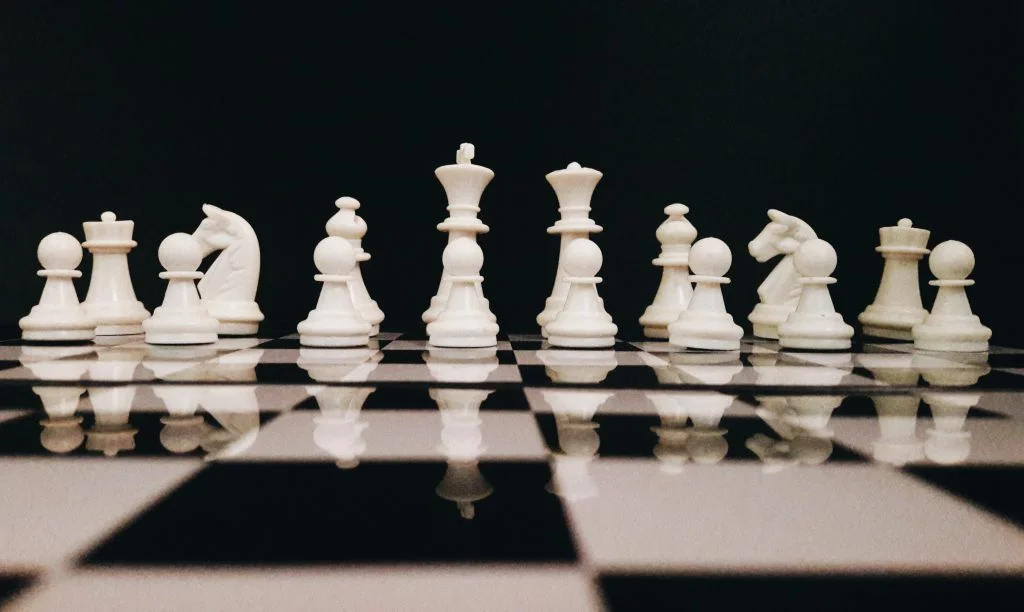
Chess is presumed to be founded in India in the 7th century. It is a two-player turn-based strategy game played on an eight-by-eight board using 32 chess pieces. The two sides involved in a chess game are generally termed “white” and “black.”
Each side gets 16 pieces, and there is no limit to how many moves one can make on a chessboard. The game can continue until the goal of a chess game is achieved, or a truce is called.
Goal Of A Chess Game
The primary goal of a chess game, barring every complexity, is checkmate. Checkmate is when the king—a piece amongst others in chess—is trapped by the opposition and cannot be saved by ally pieces.

The secondary goal of a chess game is to win. While checkmate wins the game, there are other ways to win a chess game, such as resignation, forfeit, timeout, or disqualification.
The Chess Set
A chess set has two main components: the chessboard and the pieces. Sometimes, a chess set includes a chess clock, but that is not a compulsory component.
The Chessboard
As we mentioned earlier, the chessboard is an eight-by-eight board with a checkerboard design. The eight-by-eight dimension means that 64 squares, 32 dark, and 32 light, are on the chessboard, and we must give each square a name for easy identification.
The technique employed in naming a square on a chessboard involves FILES and RANKS. So what are files and ranks?
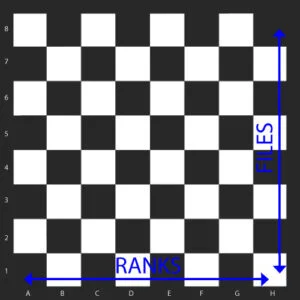
Files are the vertically lined squares on the chessboard, while ranks are the horizontally lined squares on the chessboard. Files are lettered a-h, and ranks are numbered 1-8. The letterings and numberings are aligned according to White’s view. So, if you want to name any square on the chessboard, identify it, trace it to the file, and rank it is stationed.
When naming the square, remember to give the rank priority over the rank. For instance, the square on the southwest edge of the board (from White’s view) is a1.
The Chess Pieces
There are six types of chess pieces on a chessboard. In order of priority, they are listed as follows:
- King
- Queen
- Rook
- Bishop
- Knight
- Pawn
The rook, the bishop, and the knight come in pairs per side(white and black). The king and queen come as solo pieces per side because they are royalty, while the pawns come in groups of 8.
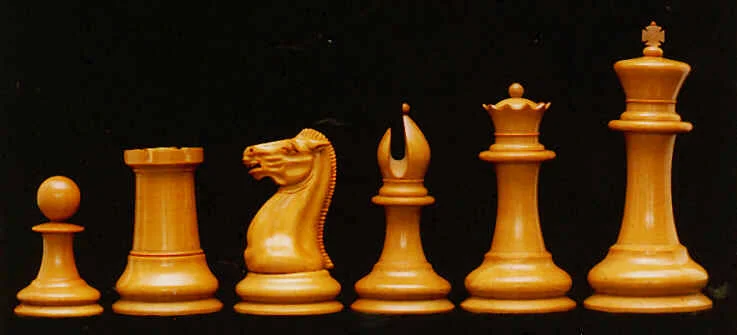
Also, as you learn how to play chess, you must remember the Knight and Bishop are considered minor pieces, while the rook and queen are considered major pieces.
The Chess Clock
We mentioned earlier that a secondary way to win a chess game is by timeout. And you can’t win by timeout without a chess clock. The chess clock assigns an allotted time to each player to control the entire duration of the game. As such, whichever player runs out of time first loses the game.
There are two known types of chess clocks:
- The mechanical chess clock
- The digital chess clock
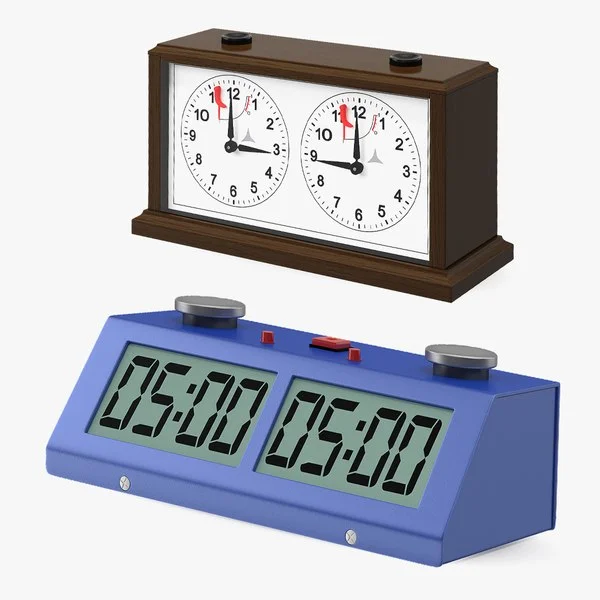
You can read more about chess and timing here. Let’s proceed to discuss more on the chess pieces.
How To Move Chess Pieces
Learning how to move chess pieces is a fundamental requirement for playing chess. Each piece has its mode of movement, which we will address shortly. We will also clarify each piece according to value.
The King
The king, identified with a cross at the top, moves one square in any direction. It can move to one square to the north, east, south, west, northwest, northeast, southeast, and southwest. It is the most important piece on the chessboard, and once it is trapped, the game is over—CHECKMATE!
The Queen
If you know how to play chess, you must know how to use the queen impeccably. The queen is the most powerful piece on the chessboard, with a point value of 9. She can move in similar directions as the king but to any length of the board. In contrast, the king can move just one square, while the queen can move as many as seven squares in one move.
The Rooks
The rooks move horizontally and vertically to any length of the board. They can move towards the four cardinal points but cannot move diagonally in between. Rooks are valued at 5 points which is significantly lower than the queen but slightly higher than the bishop.
Rooks look like castles but are not called such because the term “castle” means something else in chess. Because of their power, rooks make checkmating the opponent easier.
The Bishops
The bishops move diagonally to any length of the board. However, they are restricted to just one board color throughout the game. So, for example, if a bishop starts on the dark squares, it will finish on them. Remember that the chessboard has a checkerboard design.
Since the bishop comes in pairs, one bishop must start on the light squares. Therefore, this bishop is called the light-squared bishop, while the other bishop must begin on a dark square. Hence, this bishop is called the dark-squared bishop.
The bishop is valued at 3 points, making him three times less important than the queen. Additionally, it has a pointy top with a small slit.
The Knights
Knights give chess pieces most of their classy look because of their semblance to a royal steed. It carries 3 points like the bishop and moves in the strangest way.
The movement of the knight is nicknamed “The L Formula.” First, one must draw a small letter “L” whenever they move the knight. Then, one must count two squares toward a cardinal point and one square sideways to move them. Or one square toward a cardinal point and two squares sideways.
This movement might be a bit complex to grasp if this is your first time coming across a Knight’s move. But be assured that you will get used to this movement so much that it’ll be like breathing.
The Pawns
According to Francois-Andre Philidor, pawns are the soul of chess. They move one square forward toward the north or south, depending on which side you’re playing. However, they have the option to move two squares forward on the pawn’s first move if the player so wishes.
Pawns cannot move backward. Unlike other pieces, they can only move toward the opposition on the board.
As a side note, all the chess pieces aside from pawns are casually called “officers.”
Rules of Chess
There are several rules governing a chess game. The rules are expressed in the FIDE handbook, which every serious player should go through at least once. These rules extend beyond the chessboard to player ethics in a tournament. But let’s highlight some of the most important rules to observe when playing a chess game.

- You must wait your turn before you make a move. No player is allowed to make two moves in his turn.
- When you touch a piece, you must move it provided the move is legal.
- A player must always move the pieces correctly lest they risk being penalized for an illegal move.
- Players must use one hand to make all their moves in the game.
- The same hand that plays on the board must be the hand that taps the clock if there is a clock.
- Players must say “J’adoube” or “I adjust” whenever they adjust a piece to a square on the board, lest they risk activating the touch-play rule.
- Players must not stand up to leave the board when it’s their turn unless it’s an emergency that one must discuss with the opponent and arbiter.
How To Set Up A Chessboard
Imagine a kingdom under siege. The foot soldiers are usually on the war fronts, while the kingdom’s walls are the first line of defense. Knights typically stand watch on the wall and the rest of the kingdom, while the bishops are the last line of defense for the royal matrimony of the king and queen. Remembering this illustration is the best way to help you set up your pieces at the start of a chess game.
Chess is set up according to the setting of a kingdom under siege. The pieces are set up regarding ranks for side territory and files for a piece station. Ranks 1-4 are white’s territory, while ranks 5-8 are black’s territory. The rooks, which look like castle walls, sit at the edges of the board—the a and h-files.
The knights sit beside them on the b and g-files. The bishops bind together the king and queen on the c and f-files. The king always starts on the e-file while his queen sits beside him on the d-file. Due to the starting positioning of the king, files a-d are called the “queenside,” while files d-h are called the “kingside.”
All the officers sit on the first rank of their territory. This rank is called the back rank. Then pawns occupy the squares right in front of each officer. So while the officers start on the first rank for White and the eighth for black, pawns begin on the second and seventh ranks, respectively.
Special Moves in Chess
All moves that are not of the typical pieces are considered special moves in chess. So let’s walk you around all the special moves chess demands you to learn.
Capture
A capture means to take an enemy piece off the board and occupy the square in which it was stationed. Any piece on the chessboard can perform a capture. Similarly, we can capture all the chess pieces except the king, whose fatal fate is to be trapped in checkmate.
Also, all pieces perform a capture the same way they move except the pawn. The pawn performs a capture of one square diagonally forward. Meanwhile, it moves vertically forward.
Fun fact: Up until the 14th century, capturing all enemy pieces was recorded as a win.
Check
A check is any move that threatens the safety of the king. Because the king is the most important piece, a player must respond to a check and return their king to safety. A piece checks the king according to the way it captures other pieces.
For instance, a black bishop on d1 can check the enemy king on f3. Likewise, a white pawn on e6 can check an enemy king on d7.
When a king is checked, we must consider either of these three responses. We must capture the threatening piece, the line of fire must be obstructed by another piece, or the king must move out of the line of fire.
Any piece can perform a check except a king. It is this way because the rules of chess don’t permit a king to come within a square’s distance from the enemy king. It will be termed an illegal move.
Checkmate
Checkmate is when neither of the three responses to a check is possible. Then, the checkmate ends the game instantly. However, checkmate is not the same as a stalemate.
Checkmate, as basic as it sounds, is not always easy to achieve, especially when there are minor pieces like bishops and knights left.
Castling
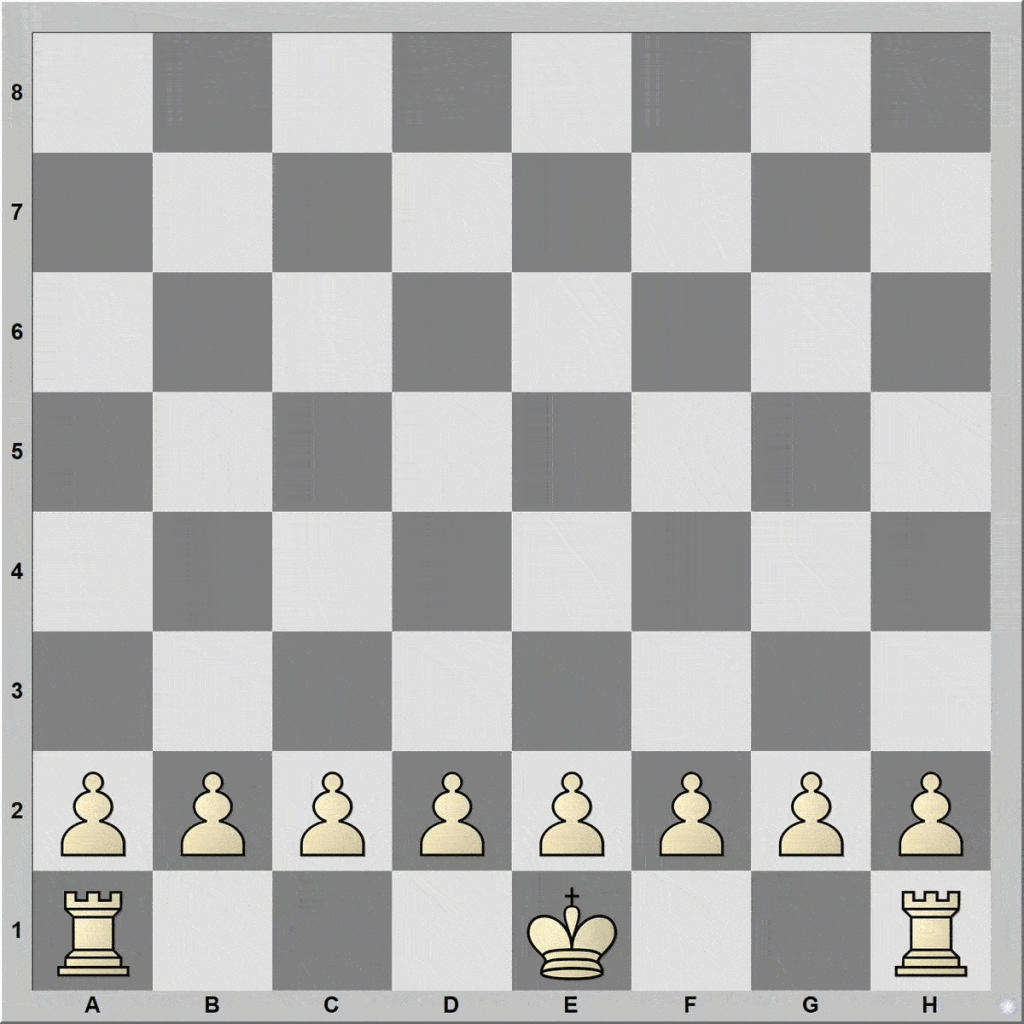
This term is why the rook is not called a “castle.” Castling is a maneuver that involves two friendly pieces in one turn—the king and the rook. Although the rook is involved in castling, the move is primarily a king move. So, the king moves two squares toward the rook. Consequently, the rook hops across the king toward the opposite direction of the king’s movement. Simply put, they cross over each other and are positioned side by side.
Certain conditions guide castling in chess, and they are explained here.
Furthermore, castling aims to protect the king by removing it from the board’s center file. At the same time, castling helps bring the rook into action from the edge of the board where it sits idle.
There are two types of castling in chess. They are:
Short castling
Short castling is done between the e to h files. Recall that we termed these files as the “kingside.” Hence, the short castling can also be called “kingside” castling. It is called short castling because there are two squares between the king and rook before castling. While for the long castling, there are three squares between the king and the rook before castling.
Long Castling
This move is also called Queenside castling because it happens between the e-file and the a-file. Recall that we termed the a to d files as the Queenside.
It is called long castling because there are more squares between the rook and the king in this castling than in short castling.
En Passant
En Passant is a French term that translates to “in passing” in English, and it was discovered in the 17th century. It is a special pawn move that enables us to capture an enemy pawn regularly, even though it moved two squares forward for its first move. This move might be a little tough to grasp on your first read, but allow me to break it down further.

Imagine your pawn is on b2; its starting position. Meanwhile, your opponent has a pawn on c4. Now, you wish to play your b2-pawn to b4 on its first move. After you make this move, your opponent can capture your piece as though it moved two squares forward. This capture means your opponent’s pawn will station on the b3 square after capturing your pawn from b4.
It might take a while, but you’ll digest it.
Promotion
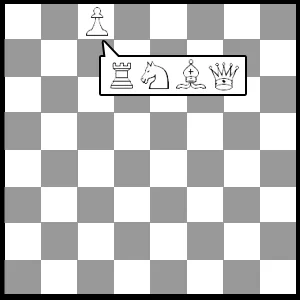
Promotion is another special move for pawns. It’s never easy for a piece that conventionally moves a square forward to make it across the board to the heart of the enemy territory. Therefore, a pawn that reaches an enemy’s back rank can be promoted to any officer except the king. The choice of promotion is based on the player’s discretion.
Due to promotion, a player can possess more than two queens or other officers(except the king) during the game. During promotion in real-time, the pawn is taken off the board and replaced with the officer of choice.
Once a pawn reaches the back rank, a player MUST promote it. That is the rule. Otherwise, we’d just have a pawn who is utterly useless in the game.
Who Makes The First Move In Chess?
The white side makes the first rule in chess. There’s no explanation for this rule, but it’s the rule.
Stages of a Chess Game
A chess game morphs into three phases. They are:
- Opening
- Middlegame
- Endgame
Opening
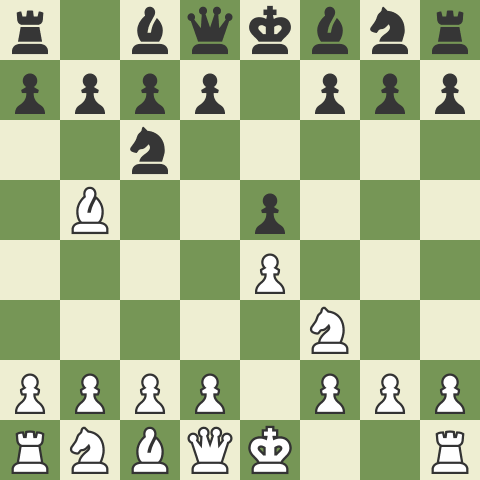
An opening is the point of a chess game where players seek to develop their pieces as soon as possible. The opening prepares players for the battle ahead.
Read More:
Middlegame

This phase is the point of a chess game where the developed pieces are now ready to fight for a better position and win the game straight away.
Endgame
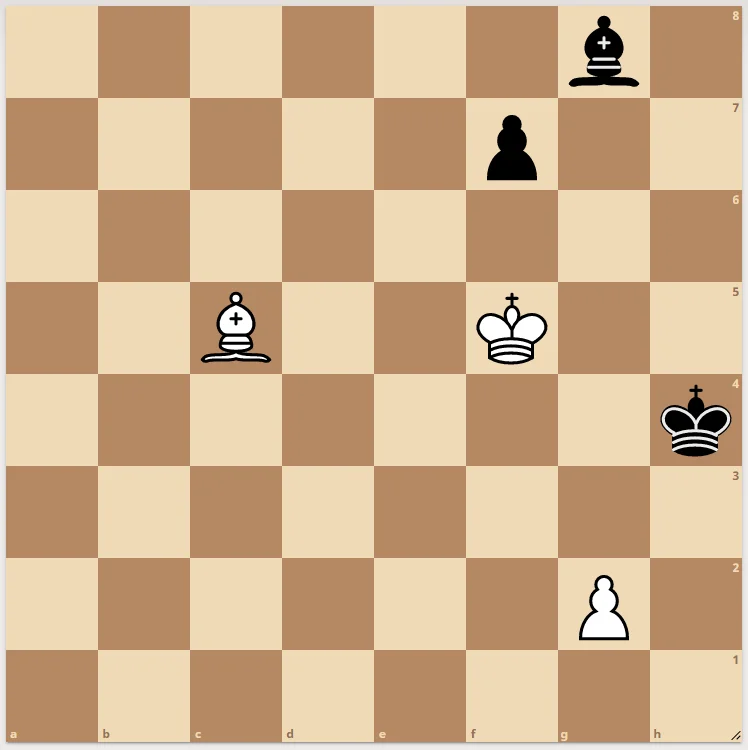
The endgame is notable when a few pieces are left on the board. It is somewhat like the latter stages of a battle when most of the soldiers have fallen.
Basic Chess Strategies
You can’t go into a chess game expecting to move pieces and checkmate your opponent without solid plans randomly. This issue is why some fundamental principles have been coined to make chess planning easier. These are some of the most crucial chess strategies for beginners:
Develop Your Pieces Quickly
To develop your pieces simply means to place them on squares where they can be maximally helpful during the game. Typically, knights are placed on the c3, f3, f6, and c6 squares, while bishops often occupy the b2, g2, b7, g7, b3, g3, b6, and g6 squares.
The rooks usually come into the action after castling. The queens are mostly placed on the second rank to back up other pieces on the battlefield.
Keep Your Queen At Arm’s Length
As you develop your pieces early on, don’t be too eager to unleash your most powerful piece on the enemy. A primary battle tactic is to preserve your most potent weapon and spring a surprise on the enemy afterward.
If you send your queen charging out toward your opponent right at the start of the game, you risk wasting a lot of moves trying to protect her from subtle attacks. Even worse, she could fall for a trap and get captured.
Control The Center
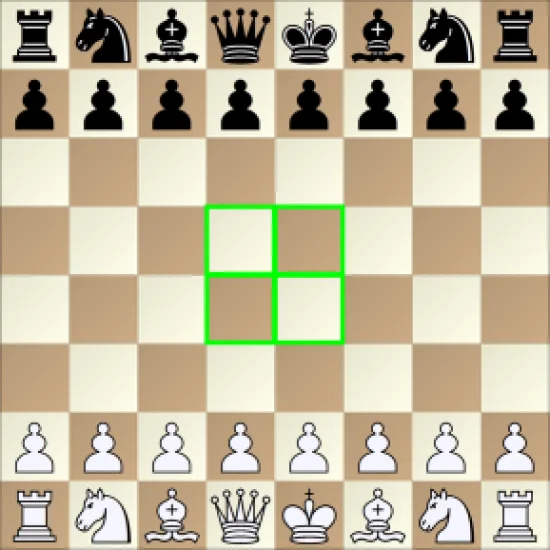
Because the center of the board projects to every other part of the board, it is vital to gain control of this delicate area. Therefore, as you develop your pieces, you must bear the idea of controlling the center.
If your opponent makes a mistake in trying to gain control of the center, relish the opportunity to gain more control of the center. Your winning chances are slightly higher if you achieve this advantage.
King Safety
Checkmate ends the game. And this massive responsibility lies on the king. Therefore, a player must make it a top priority to ensure the safety of the king. In the opening and middle game, the king should be safely tucked away from the action on the board.
Only during the endgame is a player advised to activate the king to join the battle. In the endgame, pieces are fewer on the board, so the threat to the king is lessened.
The King Safety strategy is why players are often advised to castle early in the opening. This maneuver prevents attacks from the enemy while the king is in the middle files.
Preserve Your Pawn Structure

It will hurt you to lose a game where you played so well in the opening and middlegame. You could lose a game due to a slight disadvantage in the endgame, and pawns are the primary reason behind this.
Therefore, it is advised to protect any advantage offered by pawns right from the outset. Guard the pawns, keep them in connected groups, and advance them as much as possible.
Basic Chess Tactics
While strategies are long-term plans enforced during the game, tactics are the instantaneous tools that promote these strategies. Some common chess tactics include:
Pin
A pin occurs when a piece is wholly or partially paralyzed due to the lurking threat if it is moved. For instance, a Knight on c3 could be pinned by an enemy bishop on b4 because the king is left vulnerable on the b4-e1 diagonal if the knight moves, provided the pawn on d2 has been moved.
Pins are the most commonly used tactics in a chess game and are used differently.
Fork
A fork simply means threatening or attacking two pieces at a time. Every chess piece can perform a fork, including a pawn and a king. However, only a knight and a queen can fork a maximum of 8 pieces at a time.
Skewer
This tactic is performed by long-ranged pieces only. These pieces are the bishops, the rooks, and the queen.
Other advanced tactics include zugzwang, zwischenzug, intermezzo, decoy, detection, and so on. We will discuss these as we progress in your development.
Recording a Chess Game
Knowing how to record a game is vital for tournament play and blindfold chess. The ability to record a chess game efficiently demonstrates mastery over the names of each square and where they are located on the board.
Recording a chess game is also essential in tournaments because tournaments are serious business. For example, your opponent could make a false claim about a move, but your recording sheet would debunk such a claim.
However, what is this information being recorded? How do we use them?
Chess Notations
Chess notations allow one to record their chess moves as they’re being made. These notations use alphanumerics due to files, ranks, and other special characters. The special characters represent special moves or actions. In chess notations, chess pieces are defined using the first consonant sound of their names.
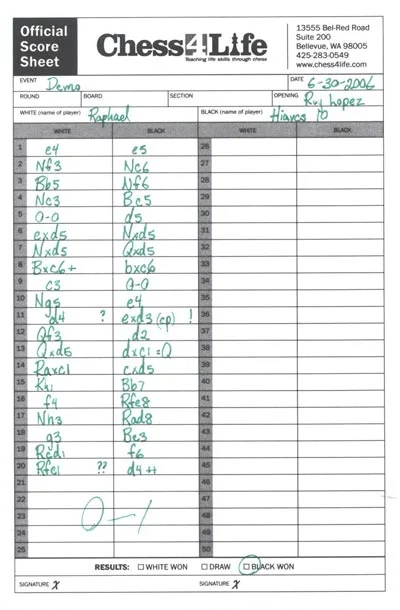
Piece Letters
- Kings are represented with K.
- Queens are represented with Q.
- Rooks are represented with R.
- Bishops are represented with B.
- Knights are represented with N,
- while pawns are not defined with any letter.
Instead, the name of the square they moved to is recorded to signify their move. So, for instance, if you move a pawn from e2 to e4 on move 1, it is recorded as 1.e4.
Special moves
- A capture is represented with x
- Check is +
- Checkmate is #
- Short castling is 0-0
- Long castling is 0-0-0
- Promotion is =
Mechanism
The following order is the priority given to the elements in chess notations.
Letter of piece > Special move (if any) > Name of landing square.
For instance, if a bishop on c4 captures an enemy rook on e6, it is written as “Bxe6”. The departure square is not acknowledged, and the name of the captured piece is also not recognized.
If a Queen on a2 moves to a5, it is written as Qa5.
You can read more on chess notations to learn about special conditions and how to cope with them.
Important Terms in Chess
As you play chess, there are specific terms you must k. These terms occur frequently, so do not get confused when they occur. However, you must know them as beginners.
Stalemate
Stalemate is when a side has no legal move to make on their turn, and they have not been checkmated. A stalemate is a draw regardless of which side was winning.
Players who are winning by a significant margin must be careful not to make a stalemate, as that will be the final hope of a hopeless side.
Draw

All stalemates are draws, but not all draws are stalemates. Both chess players can agree on a draw at any point in the game. A draw can also be declared when there’s no sufficient mating material. For instance, if there are just both kings left on the board, the game is pronounced a draw.
Also, if a side has a king and a minor piece with no pawns against a lone king, it will be pronounced a draw. Another way to reach a draw in a chess game is through a three-fold repetition.
Three-fold repetition is when both players play the same position consecutively in a back-and-forth manner.
Chess Tempo
Chess tempo refers to one’s turn in a game. It means achieving a desirable position with the fewest moves possible. You have lost a tempo if you intend to move your queen from d1 to d8 and play it to d4 before d8. However, if you move your queen directly from d1 to d8, you have gained a tempo.
Tempo is also the reason behind chess tactics like Zugzwang, and you must keep this in mind as you learn how to play chess.
Blunder

You have blundered when you miss an opportunity to win a game or present a significant winning chance to your opponent. A blunder can come in several ways as you learn how to play chess. It could be losing a substantial piece, it could be losing a pawn, and it could even be trying to protect a piece.
In summary, a blunder is a huge mistake in a chess game. If you wish to know how to play chess well, avoid blunders by all means.
En Prise
When a piece is captured for material gain, it is considered en prise. So, for instance, your queen (9 points) is en prise if I capture it with a rook (5 points) while you capture my rook.
Hang
When a piece tends to be captured for no compensation, it is said to be hanging.
Not all pieces that look hanging are hanging, so observe so you don’t fall for bait!
Flag

To flag is to lose on time. Since chess clocks are often used in tournaments, it is essential to be time-conscious if one must get a result. If a side runs out of time before they make a move, they have been flagged. Hence, they lose the game.
Sac
Sac is the short form of “sacrifice.” A sacrifice is made by giving up a piece to gain a significant advantage in the game. Some sacrifices lead to checkmate, and some lead to a material advantage, while most others lead to a significant position.
A sac is NOT simply to capture.
Initiative
Having the initiative in chess is to be in control of the game. When you have the initiative, you are winning the game. It means that you have room to direct attacks toward your opponent and try to win the game.
Battery
A battery is a piece alignment to attack or defend a particular file, rank, or diagonal. The most common form of a battery is having two rooks connected on a file or rank. One rook will have the backing of the other and torment the opponent as a sub-team.
A queen and a bishop aligned on the same diagonal can also be termed a battery. For example, Alekhine’s gun is a battery that involves the queen and both rooks. Both rooks align close to or beside each other while the queen is lined up behind them.
How To Play Chess Variants
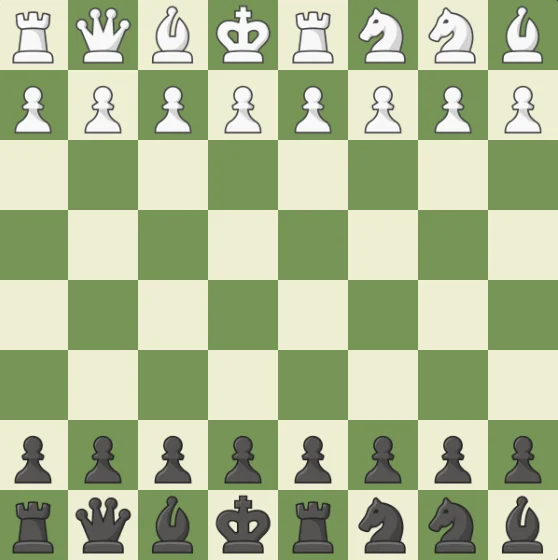
Chess variants are games that are derived from certain selected concepts of chess. There are hundreds of chess variants out there today, and if you learn how to play chess, you will know how to play the variants. Here are some of the most popular chess variants:
- Chess960
- Bughouse
- King on the hill
- Racing kings
- Anti chess
- Four-player chess
- Three-player chess
How To Play Three-player Chess
As the name implies, this variant is played between three players. Due to this innovation, a red side comes into play to join the white and black sides. Three-player chess is played like standard chess, but the strategies are more complex because you’re not just trying to contain the advances of one side but two sides. It is even more complicated because you have just one turn in a three-turn cycle.
Due to the possibility of two sides teaming up to eliminate the other side, some rules suggest that the player lands checkmate wins while others lose.
How To Play Chess For Kids
Playing chess is a great way for kids to develop critical thinking skills, enhance strategic planning, and improve concentration. Chess is a centuries-old game that has been played and enjoyed by people of all ages around the world. If you’re looking to introduce your child to this timeless game, here are some simple steps to get started:
- Learn the Chessboard: Begin by familiarizing your child with the chessboard. Explain that it consists of 64 squares arranged in an 8×8 grid. Point out that the board is divided into two colors, usually black and white, and each player has 16 pieces of different types.
- Understand the Pieces: Teach your child about the different chess pieces and their movements. Start with the pawn, explaining how it moves forward one square, but has the option to move two squares on its first move. Introduce the rook, bishop, knight, queen, and king, explaining their individual movement patterns.
- Setup the Board: Show your child how to correctly set up the chessboard. The white square should always be on the bottom right corner. Make sure the pieces are placed in their proper positions: rooks on the corners, knights next to them, bishops beside the knights, the queen on the matching color, and the king next to the queen.
- Teach the Objective: Explain that the objective of chess is to capture the opponent’s king while protecting your own. Emphasize that capturing the king results in a checkmate, which signifies the end of the game.
- Start Playing: Begin by demonstrating how to play a basic opening. Encourage your child to make logical moves and think ahead. Remind them to look out for potential threats and opportunities. As they progress, introduce various strategies and tactics to expand their understanding of the game.
- Practice Regularly: Consistency is key when learning chess. Set aside regular practice sessions with your child to reinforce their learning and improve their skills. Consider playing chess puzzles or participating in chess clubs or tournaments to enhance their experience.
Remember to keep the learning process fun and engaging. Encourage your child to explore different chess openings and variations. Chess is not just a game; it’s a mental workout that can provide hours of entertainment while boosting cognitive abilities. Read more on how to play chess for kids here.
Frequently Asked Questions (FAQs)
What is chess?
Chess is a two-player strategy game played on a checkered gameboard. The gameboard consists of 64 squares arranged in an 8×8 grid. Each player begins the game with 16 pieces: one king, one queen, two rooks, two knights, two bishops, and eight pawns. The goal of the game is to checkmate the opponent’s king, which means the king is in a position to be captured (in “check”) and there is no way to move the king out of capture (mate).
How do I set up the chessboard?
The chessboard should be set up so that the bottom-right square is a light-colored square (traditionally white). The player with the white pieces always moves first, and the players alternate turns. Each player’s pieces are placed on the first and second rows of their respective sides of the board. The pieces are placed in the following order (from left to right): rook, knight, bishop, queen, king, bishop, knight, and rook. The pawns are placed on the second row.
How do the pieces move?
Each chess piece has its own unique way of moving. Here is a summary of how each piece moves:
Pawns: Pawns move forward one square at a time, but capture diagonally. Pawns also have the option to move two squares forward on their first move.
Rooks: Rooks can move any number of squares horizontally or vertically.
Knights: Knights move in an “L” shape, two squares horizontally and one square vertically (or vice versa). Knights are the only pieces that can “jump” over other pieces.
Bishops: Bishops can move any number of squares diagonally.
Queen: The queen can move any number of squares horizontally, vertically, or diagonally.
King: The king can move one square in any direction.
How do I capture an opponent’s piece?
To capture an opponent’s piece, you move your piece to the square occupied by the opponent’s piece. The opponent’s piece is then removed from the board.
What is castling?
Castling is a special move that allows you to move your king and one of your rooks in a single move. To castle, move the king two squares towards the rook on its original square, then move the rook to the square over which the king crossed. Castling is a way to help protect the king and develop your rooks. There are some restrictions on when you can castle, such as the king and rook cannot have moved before and the squares between the king and rook must be empty.
How do I win the game?
The game is won by placing the opponent’s king in a position where it cannot escape capture (also known as “checkmate”). A player may also win by forcing the opponent to resign, or by having a higher score in a timed game.
Can I touch an opponent’s piece?
You are not allowed to touch an opponent’s piece unless you are capturing it or moving it to a new square as part of a legal move. If you accidentally touch an opponent’s piece, you must move it if it is a legal move. If it is not a legal move, you must choose another piece to move.
What is “en passant” capture?
“En passant” is a special pawn capture that can only be performed immediately after a pawn moves two squares from its starting position, and an enemy pawn could have captured it by moving diagonally to the square the pawn passed over. To capture en passant, the capturing pawn moves to the square the pawn passed over and removes the pawn from the board as if it had moved only one square.
What is a draw?
A game of chess can end in a draw (tie) in several ways:
Stalemate: This occurs when a player’s king is not in check, but the player has no legal moves left.
Threefold repetition: If the same position occurs three times with the same player to move, either player can claim a draw.
Insufficient material: If neither player has enough material (pieces) to checkmate the opponent, the game is a draw.
Draw by agreement: Players can also agree to a draw at any point in the game.
Are there any chess variants for beginners?
There are many chess variants that you can try as a beginner. Some popular variants include:
Chess960: In this variant, the starting position of the pieces on the first and eighth ranks is randomized, with the exception that the bishops must be placed on opposite-colored squares.
Bughouse chess: This is a multiplayer variant played by teams of two, with each player having their own board. When a player captures a piece, they pass it to their teammate, who can then drop it on their board as a new piece.
Blitz chess: This is a fast-paced variant where each player has a limited amount of time (usually 5-10 minutes) to make all of their moves.
Crazyhouse: In this variant, players can drop captured pieces on the board as new pieces on their turn.




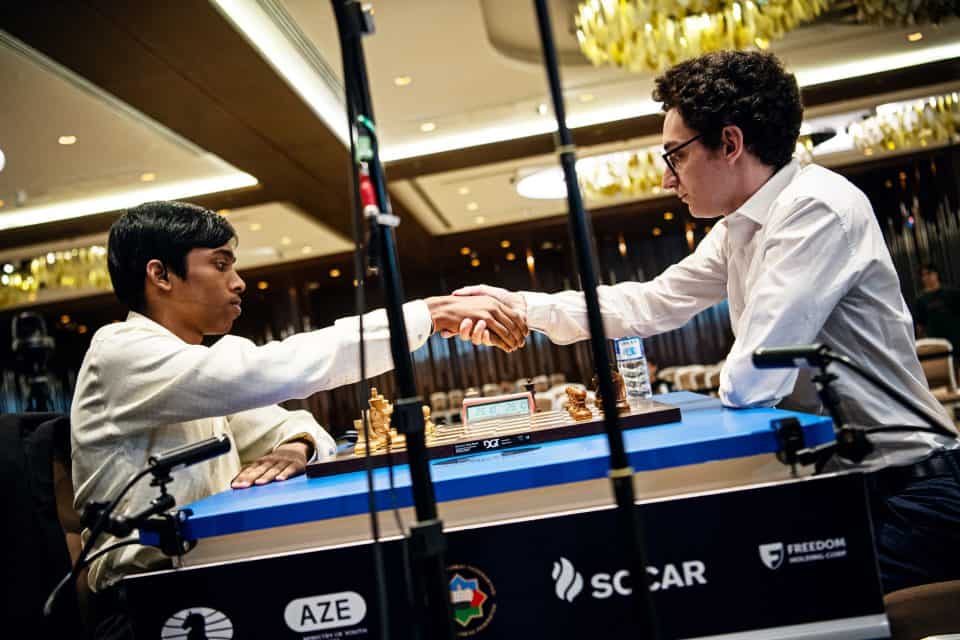
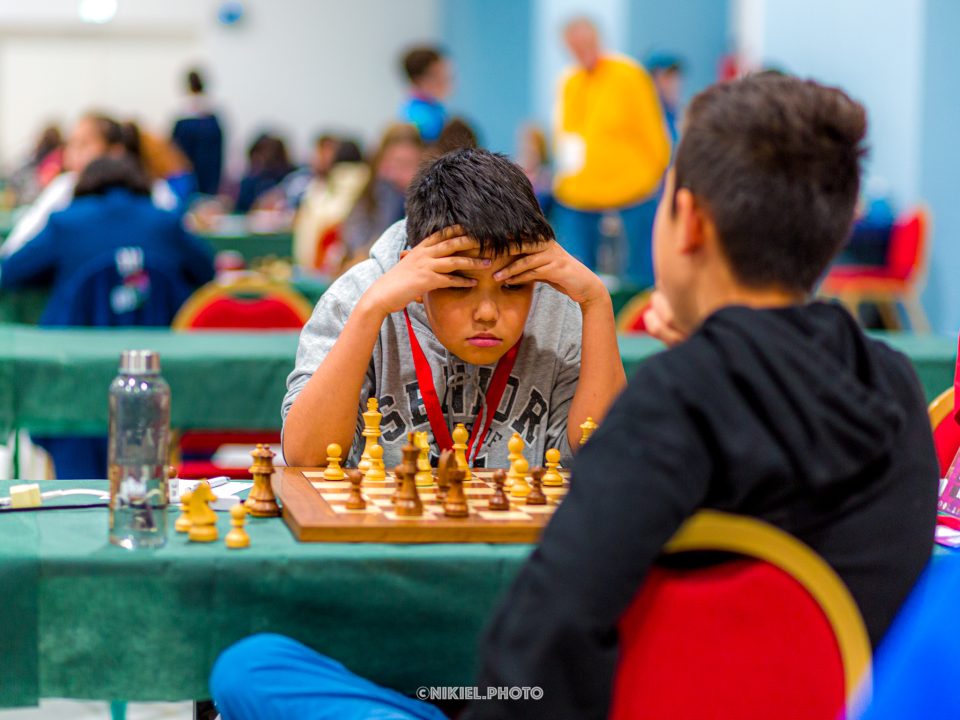
join the conversation